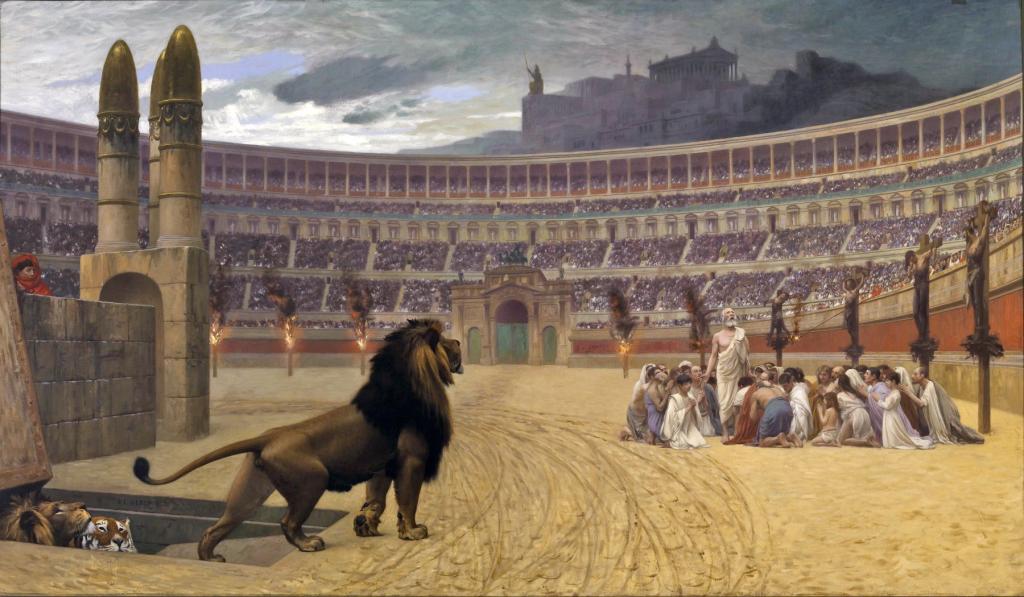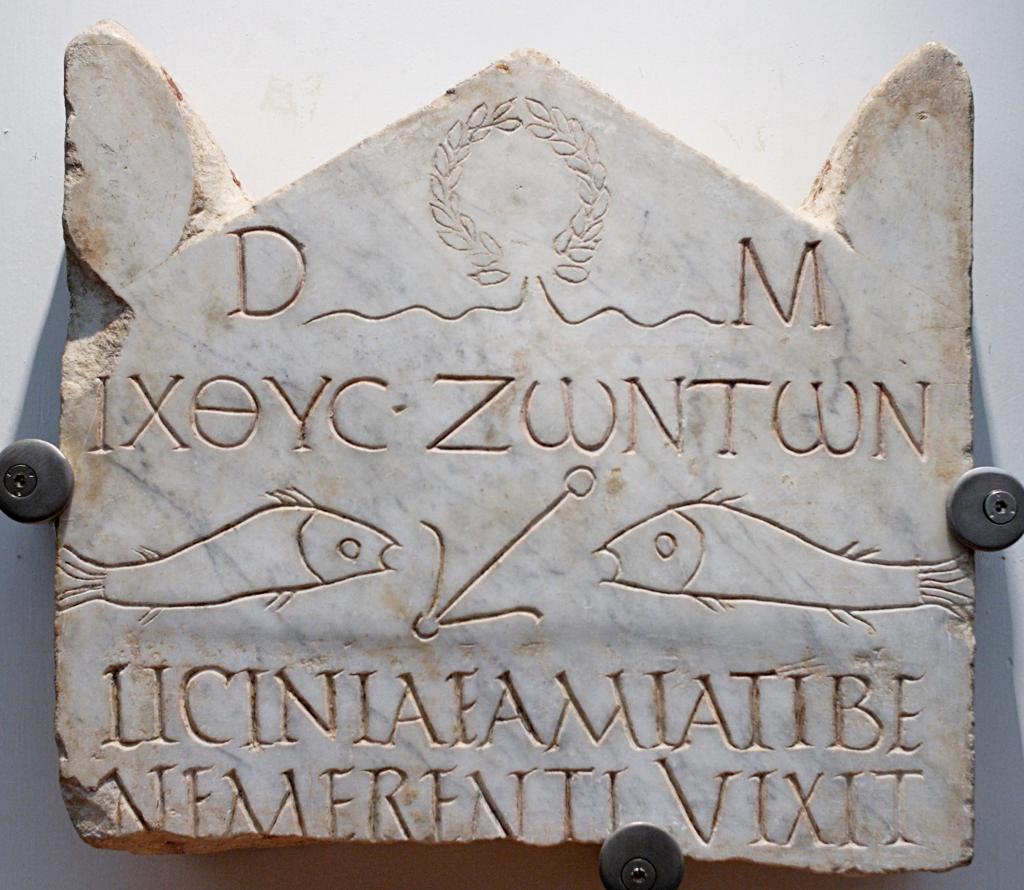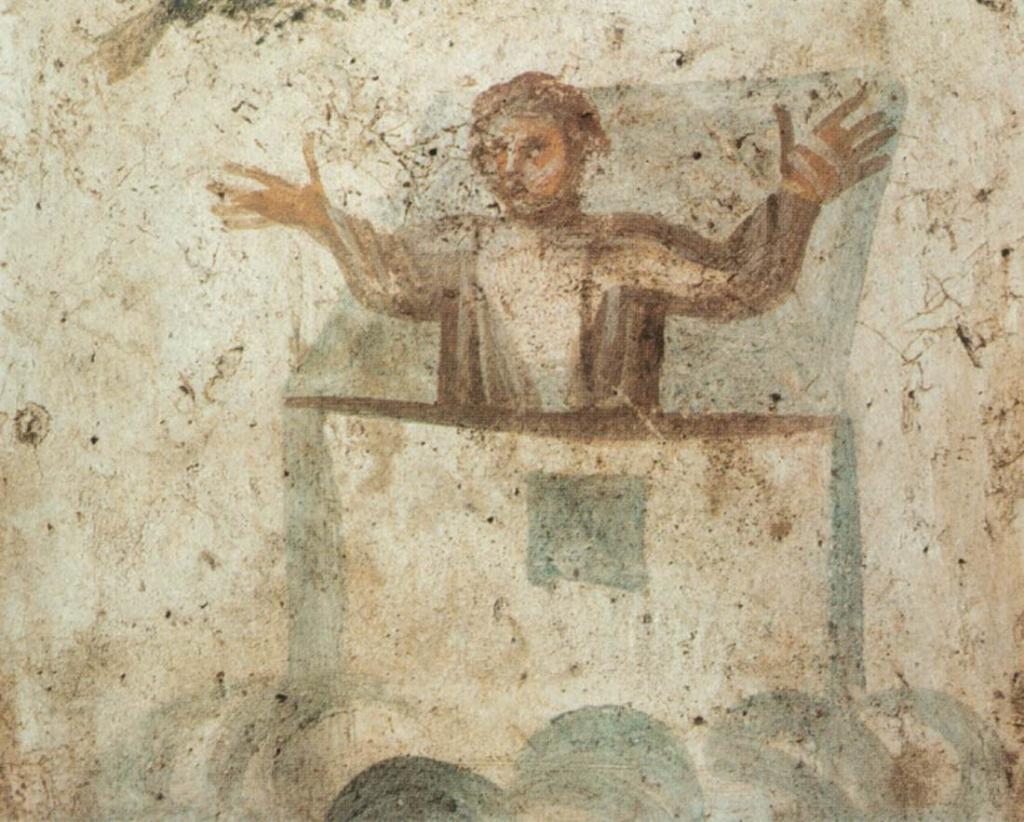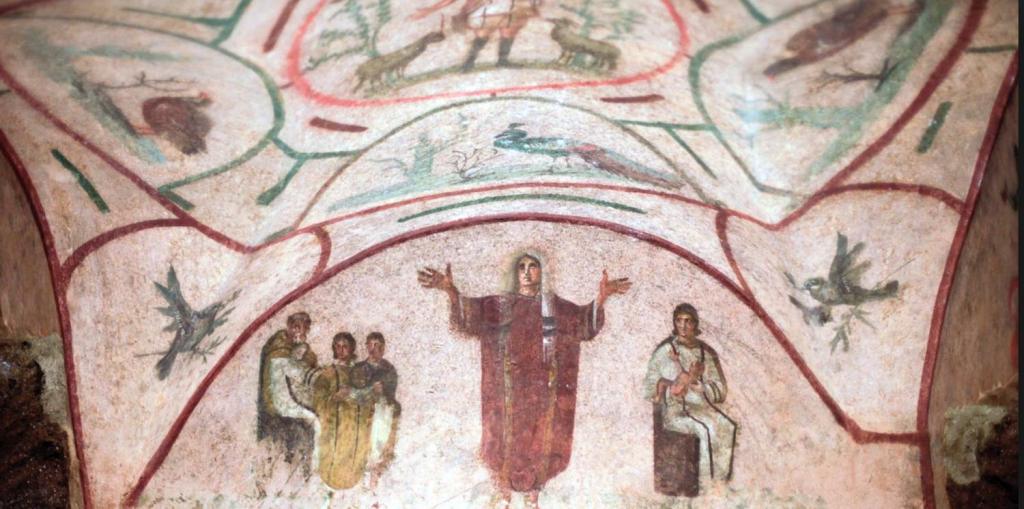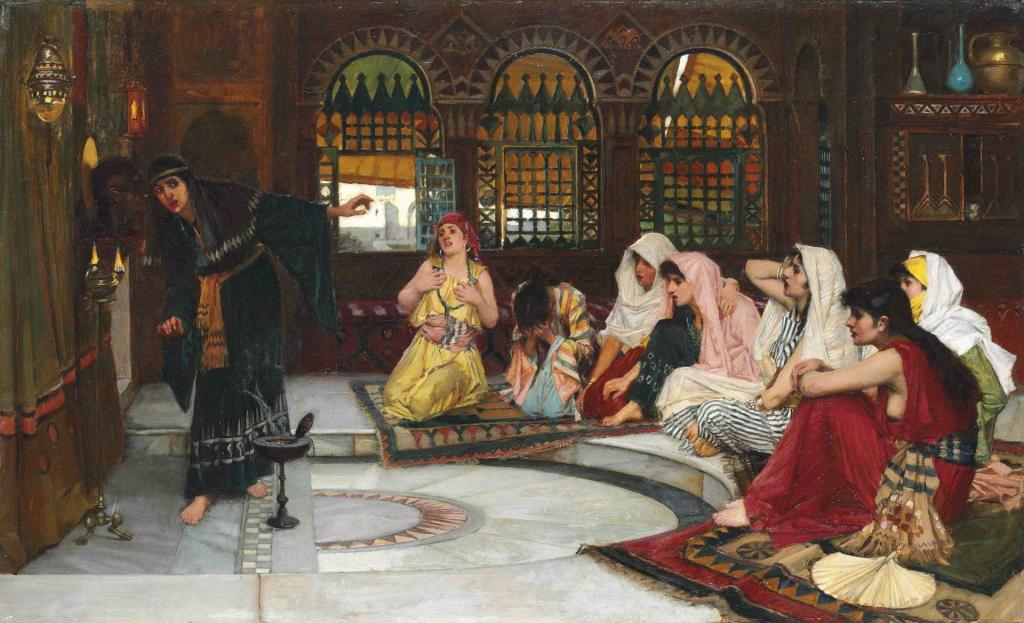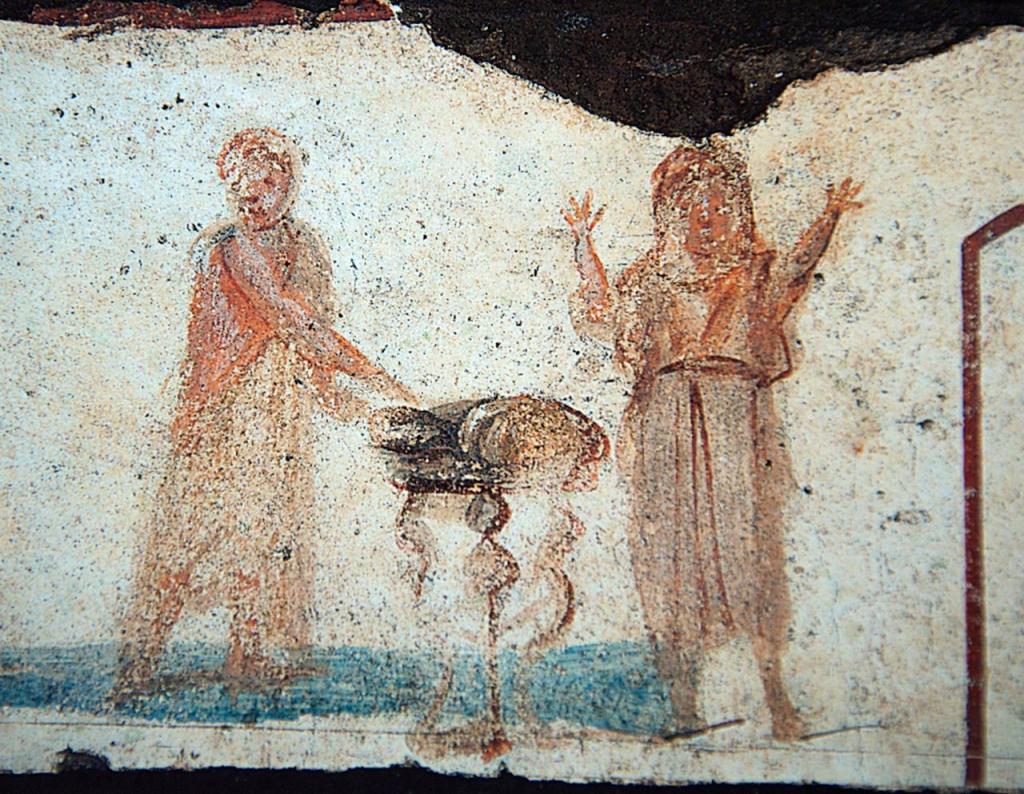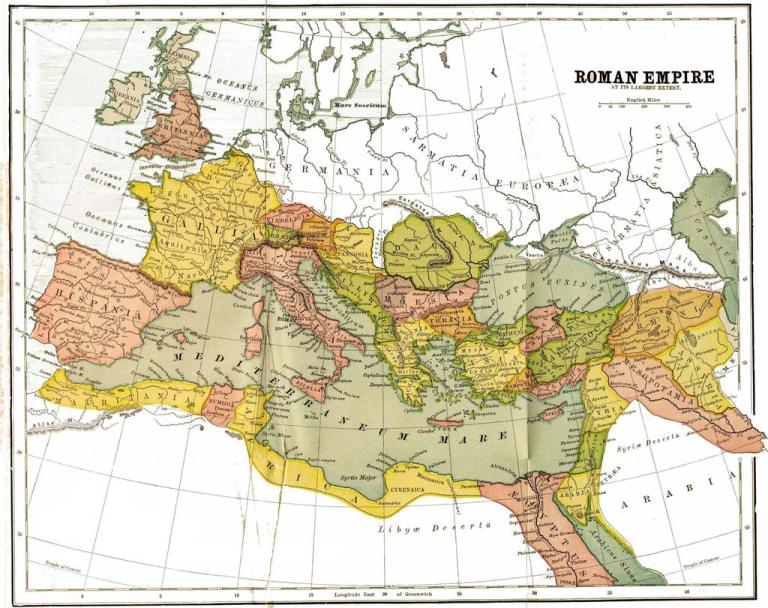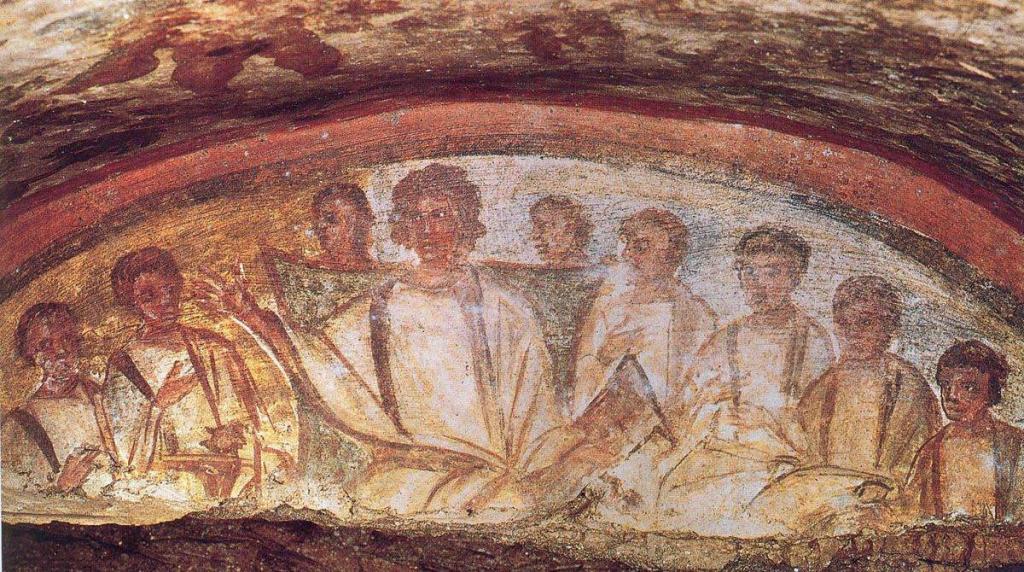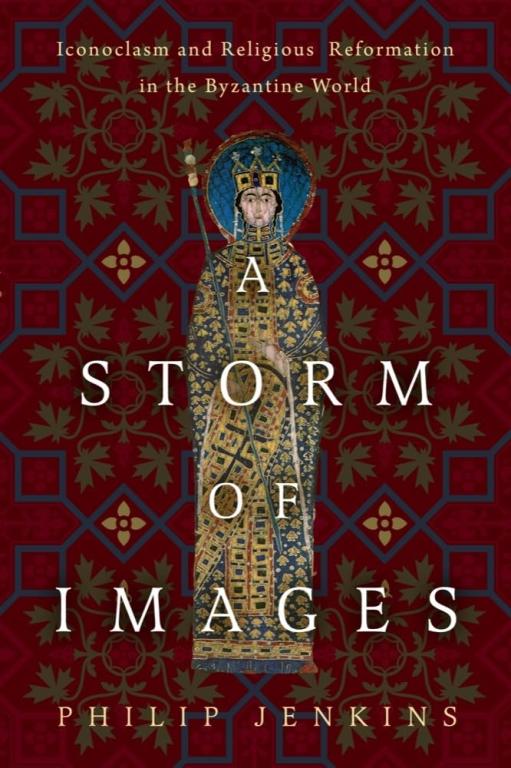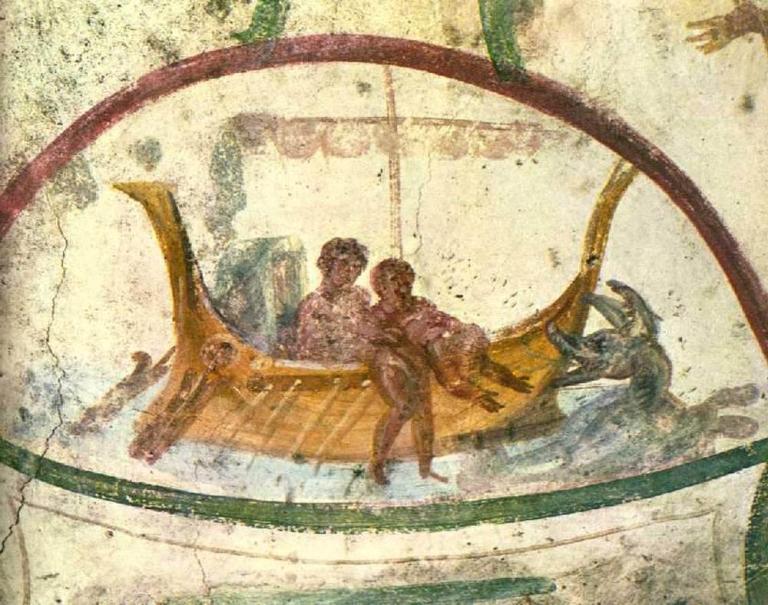I recently posted about the superb new Cambridge History of Ancient Christianity (henceforward CHAC), edited by my two Baylor colleagues Bruce Longenecker and David Wilhite. I have been exploring the book in some detail to prepare for a forthcoming symposium we are holding around it at Baylor University on March 27 (See the full event program here). Reading the book gave me a lot of ideas not just about the specific essays in that book, but more generally about the issues involved in studying that whole era, in which I have an enduring interest. Let me stress that what follows here is in no sense a review of the CHAC, or of any particular essays, but rather a series of topics and approaches that come to my mind as I explore such a rich and provocative collection. In summary, the collection offers a wonderful road map of the new contours of that ancient Christian history.
The Way Things Were Always Meant To Turn Out
I need to be careful when I talk about “new” approaches here. Nineteenth century scholars (especially Germans) already raised very challenging questions about the general assumptions many held about the shape of those Christian origins, and the triumph of the great church with its attendant orthodoxies, and its acknowledged canon. Even so, it is not hard to find even quite recent writing making what I would describe as fundamental errors in their assumptions. Nor does that remark only apply to faith-based publications: similar problems arise in much popular writing, and teaching.
So what kind of problems would I cite in a “traditional” approach? My main complaint point would be it leans towards the linear, and the teleological. By that, I mean that it assumes that Christianity and the church were always destined to assume the lines that they did historically, and that any rival or competing trends were errors, digressions, or simple failures to grasp the proper directions of history, or rather, HISTORY.
Encouraging that approach is an over-reliance on the documents that happen to survive, without paying proper attention to the accidents that permitted the survival of those texts. That approach manifests in different ways. In the earliest era, it means focusing on the Gentile Christianity described in Paul’s letters, because that was going to become so dominant after the crisis of the Jewish wars of the 60s and the 130s AD. Related to that was a tendency to see Christianity severing its ties with Judaism at a very early stage, and making a starkly clean break with the past.
In later times, it is tempting to write as if Nicene and Chalcedonian orthodoxies were always destined to triumph. It was, or should have been, obvious to any honest and right-minded person where the church was going – to move toward what Vincent of Lérins famously characterized as “that which is believed everywhere, always, and by all” (quod ubique, quod semper, quod ab omnibus creditum est). Defeated by the obvious truths and brilliant arguments of the Great Church, all rival currents fall by the wayside, and rightly so.
The flaws of that approach are just as apparent when we look at the debates of the fourth and fifth centuries, where so little survives from the losing side – notably, from the Arians, who actually dominated the empire’s religious scene for a lengthy spell in the mid-fourth century. Somewhere, in another dimension far away, there is a whole alternate history where the Arians had the last word at the third Council of Sirmium, in 357, and the Nicenes faded to oblivion. It could easily have happened. When the accidents of imperial succession eventually meant defeat for Arians and victory for the self-described orthodox, personified by the Cappadocian Fathers, history was rewritten accordingly, and the Arians became a byway.
Some enterprising scholar could compile a fascinating list of all the lost writings of early Christian history that we would dearly like to see recovered, but which never will be, and without which it is impossible to write any balanced account of the era.
In Some Places, At Some Times, And By Some
Against that background, let me describe the radically different approaches of the essays in CHAC, with their implications. Most striking is the emphasis on multiplicity, on diversity, and on contestation. As the book’s description notes, the whole idea of ancient Christianity is so problematic “because within this category lie multiple forms of devotion to Jesus Christ, multiple phenomena, and multiple permutations in the formative period of Christian history. Within those multiples lie numerous contests, as varieties of Christian identity laid claim to authority and authenticity in different ways.” Indeed, the book is structured in six major sections, respectively entitled Contested Contexts, Contested Figures, Contested Heritage, Contested Cultures, Contested Beliefs, and Contested Bodies. In contrast to what Vincent preached, the story we read is always of what is believed and practiced “in some places, at some times, and by some.”
Throughout the story, we see prolonged and intense debates over such critical themes as authority and authenticity, neither of which can be seen as self-evident. Another potent word is options, which is used for the Marcionite and Gnosticizing currents that were so obvious a part of intra-Christian debate: options that reasonable people could choose, as opposed to heretical snares into which the unwary could fall.
This may be an obvious comment, but the book concerns “ancient Christianity” rather than the Patristic era, as it might once have done, and it treats that term “Patristic” very cautiously and selectively. Apart from its intrinsic gender bias, to focus so heavily on Church Fathers assumes that the story of the early Church can be told through the contributions of great leaders and thinkers, those who formed and debated doctrine, before visiting their conclusions on a welcoming world of the simple faithful.
Contested, Complex, And Multiple
So much of the book also concerns identity, and identities, which are presented as complex, contingent, multiple, and fluid. To simplify, it is much harder to draw straight lines. The separation between Judaism and Christianity thus becomes much slower, patchier, and messier, and very much subject to conditions in particular localities. Contributing to this is a much greater awareness of Judaism and its complexities in these early centuries, when Jewish scholars and sages were themselves so anxious to redefine their faith and canon far more narrowly than had been the case historically, and to present those older alternatives by the demeaning term “sectarian.” It was not only Christians who were presenting their history as linear and teleological.
Nor were the lines separating “orthodox” and “heretical” Christianities any clearer. As Alexandre Dumas remarked, cynically but accurately, “The difference between treason and patriotism is only a matter of dates.” Very much the same can be said of orthodoxy and heresy. Actually, in that instance, the difference is a matter of places as well as dates.
Pinning Down Christian Identities
That identity question has other implications. We tend to write about the spread or growth of Christianity as if it was straightforward and (again) linear, and we do so with virtually no reliable evidence about actual numbers at any given point (with all apologies to my much-respected former Baylor colleague, Rodney Stark). But “Christianity” as a reified entity neither grows or shrinks: rather, those trends are based on the behavior of many individuals, whose particular outlook and behavior is hard to reconstruct. Nor was that behavior necessarily unidirectional. One of the very earliest non-Christian accounts we have of early believers is Pliny’s letters to Trajan, from 112 AD, and already by that point, we know there were people who had experimented with the new faith, but decided it was not for them. If only we had the resources, it would be wonderful to write a history of defecting and apostate Christians in that early world.
Once again, everything comes down to sources. In a precious few cases, an individual converted and held stubbornly to the faith until it cost their lives, and some other person write about them in detail. In contrast, very few people write the detailed biographies of half-hearted converts who drift away from the church, possibly betraying old friends in the process. Our records of persecutions under Diocletian, say, include vanishingly few accounts where the terrified suspect agrees to sacrifice to any gods offered to him, and to abandon the church. But such events must have occurred, and likely in substantial numbers: but who bothered to commemorate that fact, or to preserve the records? Badly behaved Christians seldom make history.
I am not suggesting we take this too seriously as literal truth, but anyone wanting to explore early Christian history should carefully read Lucian’s mid-second century account of the career fraudster Peregrinus, who posed as a persecuted Christian and became a leader in the community. As early as the Didache (100AD?) churches were warned sternly about confidence tricksters operating under the guise of prophets and apostles. The very mobile and cosmopolitan worlds of early Christianity offered abundant opportunities for such deceivers.
Recruits, Converts, and Candidates
Thinking more about that issue of Christian identity, and identities. Scholars of religion (and especially of new religious movements) are cautious about using the term conversion, which assumes a near instant transformation, as on the road to Damascus. They prefer to speak of recruitment, of joining the new religion for a variety of possible reasons, which might be quite tentative and experimental. We would thus describe the processes of moving in or out of a religious system as more gradual, as an individual forms greater or fewer attachments within a community, and progressively reduces or severs links with the outside world. When they have so many attachments within the new system, they increasingly sever those outside links, and identify mainly – perhaps wholly – with the new world. As is well known, early churches kept their recruits in a lengthy process of training and teaching – of candidacy – before granting full admission. People could be at multiple stages along a Christianizing spectrum, on their way into (or out of) the faith.
In the context of Christianity, that must have meant that many who identified as Christians at any given time would still have sizable and continuing links with other systems, with Judaism or forms of pagan worship, and might have followed some of the older practices. Depending on place and time, there must have been a sizable traffic of ideas, behaviors and practices with paganism.
This observation actually fits themes that appear in many other sections of the CHAC, which can be summarized by such key terms as liminal, and transitional. We need to think of Christian identities in these terms of shifting frontiers, rather than drawing lines in the spiritual sand. Also, the CHAC talks a great deal about how such identities are formed, through processes of debate and dialogue, dialectic and polemic, interaction and transaction. Several essays in the section on “Contested Figures” centrally stress the role of memory as it is socially constructed in imagining and reimagining not just Jesus himself but such vital symbols as Peter and Paul. As they are formed and debated in communities, memories shift over time, and they reshape identities and perceptions. As a wise saying observes, “If I hadn’t believed it, I wouldn’t have seen it with my own eyes.”
So much of CHAC concerns those questions of memory, of how it is constructed and received, and transmitted through story telling. Over time, shared stories form and cement identities, and in this process, in the context of the early church, takes of martyrdom and persecution played a critical role – perhaps the critical role – in defining the new community, and declaring the limits beyond which one must not stray.
Ancient Christianity as Lived Religion
Much of my current work concerns the idea of lived religion, which is presently an enormous theme in the study of religions of all kinds. Briefly, this approach pays full attention to what ordinary people actually do in a given religious setting, regardless of how that meshes with what is taught by institutions, or prescribed in scriptures. Of its nature, it is difficult to reconstruct behavior in long-gone societies in which ethnographic research is not possible, but that does not mean relying entirely on the texts produced by elites and institutions. Indeed, that lived religion approach is now very popular with scholars of the ancient Mediterranean religion. In the words of one of the leading exponents, Jörg Rüpke,
Rather than analyzing expert theologies, dogma, or the institutional setting and history of organized religion, the focus of lived religion is on what people actually do: the everyday experience, practices, expressions, and interactions that are related to and constitute religion. In this way, religion is understood as a spectrum of experiences, actions, beliefs, and communications hinging on human interaction with super-human or even transcendent agent(s), usually conceptualized by the ancient Mediterraneans as gods. Material symbols, elaborate forms of representation, and ritualization are called upon for the success of communication with these addressees.
Every word of this naturally has powerful implications for scholars of ancient Christianity, which was absolutely part of that larger Mediterranean world, and which must always be located along the spectrum of other contemporary systems. Any account of early Christian developments that fails to contextualize it in that way is deeply suspect.
That older lived religion included several key features which people would be anxious to carry over to the new, in whatever guise: these were the things they actually needed from their spiritual practice. Among these, I would highlight the presence of what we might call usable gods. Adherents might accept the truth of a transcendent Trinitarian God and his divine son, but they would also want divine forms who could be seen and touched, and incorporated into the public landscape, or the home. Increasingly, it was by no means only Roman pagans who were so invested in those “material symbols, elaborate forms of representation, and ritualization” cited by Rüpke.
The urge to visualize and materialize the holy was very strong, and saints proliferated. There were also specific needs, such as for protection against supernatural evil, and Christian themes soon appeared in protective (apotropaic) material objects, as in architecture. Here, Christians were following closely on very widespread and familiar Jewish practice. The need to predict and comprehend the future created a whole world of Christian divination. A great deal of Christian debate from the third century onward was devoted to determining the appropriate limits of such appropriations and survivals. Already by the fourth century, debates over the proper use of images in churches and public settings was creating a literature that would be cited frequently in the Iconoclastic struggles half a millennium afterwards.
Arguably, this need for usable deities drove the quest for female forms of the holy. No later than the mid-second century, gospels of the Virgin Mary were becoming immensely popular. The first recorded apparition of the Virgin was to Gregory the Wonderworker, in the mid-third century, as reported by Gregory of Nyssa a century later.
Awareness of that larger Roman context is demonstrated by several essays in CHAC, which for instance study the origins of Christian material culture, and which properly stress the rich history of early visual depictions of the holy.
Minimally Counterintuitive
The close and growing proximity of Christianity to the ordinary lived religion of the Roman world greatly assisted the movement’s spread. Obviously, religions convey their messages by means of story telling and narrative, but new and rising movements face a special challenge if they try to present a truth that is radically different from what people know and expect. In recent years, a recurrent theme in the study of such narratives focuses on how sharply or narrowly they deviate from ordinary observed experience. From this perspective, the most effective stories are minimally counterintuitive – that is, they deviate from obvious consensus reality, but only in one or two key aspects. This makes them easy to communicate, as they fit so well with that reality in most respects, but those additional features mean that they attract special attention because of their somewhat startling character, and that makes them easy to remember and recount. We all know that trees exist, but to report words spoken by a talking tree is counter-intuitive. Even so, it does not add multiple extraneous or shocking elements. So influential is this view of narrative that it has acquired a common abbreviation in the term “MCI theory.”
If we apply this to the emerging Christian movement, members had the enormous advantage of presenting ideas that were not too far removed from those very familiar from mystery religions, or from Judaism, but with some truly distinctive themes, such as the focus on one historical individual. Can we describe Christianity’s greatest strength as being minimally counter-intuitive?
Ways Forward In Lived Religion
One of the best surveys of these matters is Nancy Ammerman’s book Studying Lived Religion: Contexts and Practices (NYU Press, 2021), which is overwhelmingly modern in its coverage. Even so, the implications for earlier eras are obvious, and they offer a splendid agenda for research. Ammerman divides her material into six broad categories of practice, namely spiritual, embodied, material, emotional, aesthetic, and moral. We already have an excellent literature on some of these approaches, on themes such as the history of the senses or the emotions, of material religion, or of embodiment, but these areas are certainly destined for much further investigation.
So also are studies that root the embodiment of religion in biological and cognitive realities, which are intriguing for understanding alternative states of reality – visions, ecstatic experiences, prophecy, otherworldly journeys, and so on. Do see the short list of references that I present at the end of this present blog.
Geographies of Faith
I have suggested that historians have a bad habit of writing as if later realities were inevitably intended, and (crudely) as if the records we possess are all that ever existed, or all that mattered. That is especially true in terms of the geographies of faith, where so much of what we usually describe is determined by the chance survival of texts.
In an earlier post, I remarked on one area of the ancient world that seems to have been quite vital to the Christianity of its day, but of which we can now say next to nothing. This was Spain, and the example should stand as a powerful warning. Look at an admittedly incomplete map of the churches known to have been founded before 300 AD, that is, in the times of persecution. Several dense clusters clearly emerge, which indicate the greatest bulwarks of Christian strength and numbers. These include central Italy; North Africa, chiefly in modern Tunisia and the far eastern parts of Algeria; Egypt, in the Nile Delta; the Levant, mainly the coastal regions of Syria and Palestine; southern and western Asia Minor; and southern Spain. In every case except the last, the clusters are obviously centered on one of the empire’s greatest cities, respectively, Rome, Carthage, Alexandria, Antioch, and Ephesus. With very few exceptions, every piece of surviving Christian writing from the second and third centuries that we can plausibly locate comes from one of those five celebrated centers. The exceptions include Lyon, as well as Edessa (Mesopotamia) and probably Jerusalem.
But there was one other very notable center of flourishing Christian activity, which surrounds the thriving city of Córdoba. This was the cultural capital of the Iberian Peninsula under Roman rule, much as it would be in the Islamic Middle Ages. Southern Spain shows up very prominently in those maps I mention of the earliest Christian activity, with a dense swarm of early churches. Córdoba itself must have been a Christian hub in this early period, although precisely no written record of that history survives. Moreover, it would have been one of the earliest centers of specifically Latin Christian thought and writing. In the early fourth century the city’s bishop Hosius was the de facto head of the Christian church in the Latin West, who probably chaired the famous Council of Nicea, in 325. He did not come out of a vacuum. Around 306, this region was the setting for the very important Synod of Elvira, the precursor of all the church’s later disciplinary synods, and indeed of its general councils.
Actually, Córdoba need not have been that exceptional within Spain. Tarraco (Tarragona) was probably another region of lively Christian activity, and the celebrated local bishop, Fructuosus was martyred here in the 250s. Zaragoza (Caesaraugusta) and Mérida were also significant. The problem is that so little of our evidence about all this is strictly contemporary. Not until the poetry of Prudentius in the later fourth century do we learn much of the commemoration of those early cults. Otherwise, so much is simply dark.
As Robin Lane Fox writes, “In the West, in short, early Christianity has lost its history.” Read that sentence again. For historians, that is a humbling insight.
By Land and Sea
The more I look at early Christianity, the more clearly I appreciate the significance of the communication systems created by the Roman empire, and how vital it is for historians to understand these (I posted on this not long ago). The great roads were indispensable, and provide a wonderful map of Christian expansion. When Paul traveled from Philippi to Thessaloniki, he must have used the splendid Roman road called the Via Egnatia, which remained a principal artery for imperial communications well into the Byzantine era, and indeed through Ottoman times. The road ran for six hundred miles from Byzantium (later Constantinople) to Dyrrachium/Durrës on the Adriatic. It would be quite possible to write a spiritual history of that particular road alone in terms of the religious and mystical ideas that it conveyed, from the early Jesus movement to the Christian heresies of the High Middle Ages.
Each of the five great imperial hubs that I just mentioned as so central to Christian history stood at the center of a far-reaching network of fine roads. One great Asian road stretched from Jerusalem to Tyre and Antioch, on to Smyrna and Ephesus, and then connecting to the Via Egnatia for access to Europe. Each of the five cities was also a vital center of the empire’s Mediterranean sea traffic. Córdoba meanwhile was a key junction on the great Via Augusta, the Roman road that ran nine hundred miles from the port of Gades/Cadiz to Narbonne in Gaul. That Via Augusta also passed through Tarraco/Tarragona, from which another great connecting road ran to Zaragoza/Caesaraugusta.
Eusebius Tries Again
It is very tempting to write the history of ancient Christianity in terms of its relationship with the Roman empire, the Roman world, and Roman society, and we absolutely have to stress all those dimensions. The problem with that is that a lot of that early history simply did not happen within that empire, and actually occurred under the other great realm of the day – that of Persia – or, often, in the buffer states that stood uneasily between the two realms, such as Armenia, Osrhoene, or Adiabene. Any account of this era must take account of the Hellenistic inheritance that straddled imperial frontiers. Early Christianity emerged in what I have called the Hellenistic Triangle, with its three corners at the world megacities of Egyptian Alexandria, Syrian Antioch, and (Persian) Seleucia-Ctesiphon.
This is a topic on which I have posted frequently in the past, and which forms the subject of my 2008 book The Lost History of Christianity. In that book, I acknowledge my heavy debt to the work of Andrew Walls, and especially to a short but splendid paper that he published in 2000 under the evocative title “Eusebius Tries Again: Reconceiving the Study of Christian History.” Walls shows that we can tell the story of Christian expansion from the Jerusalem of the 30s AD eastward as well as westward, and construct just as powerful and sweeping a narrative, as the faith stretches into Mesopotamia, into Persia, and beyond, towards the Indian Ocean. This too is surely an integral part of “ancient Christianity,” and must always be treated as such.
Christianity as it became a world religion was thoroughly rooted in the Roman world and its aftermath. Hobbes was dead right to observe that “The Papacy is no other than the ghost of the deceased Roman Empire, sitting crowned upon the grave thereof: for so did the Papacy start up on a sudden out of the ruins of that heathen power,” and the same statements could be made about the Christian faith as a whole. But viewed at the time, it was far from obvious that Christianity might not find equally fertile soil in the Persian realm.
The Long, Long, Arc Of Early Christian History
I have suggested that an ideal history of ancient Christianity would necessarily transcend the geographical bounds imposed by our maps of the Roman Empire. We also need to think carefully about its chronological limits. When does that “ancient” world end? With the establishment of the Christian state religion, and the outlawing of paganism, in the 380s? At Chalcedon in 451?
But there is a problem there. Suppose for the sake of argument we take 451. That then means that we write our histories up to that pivotal year, and not beyond. Although we may not intend this, that means that we cease talking about events or trends after that point, which gives the impression that they ceased to exist. Just how dangerous that is emerges when we trace the history of early Christian alternative movements and heresies (sorry, options) and their scriptures. We write as if they all vanished around 400, which they certainly did not. Some or all persisted deep into the Middle Ages, including such potent groups as the Marcionites. The Manicheans combined a great many strands of ancient religious thought, Jewish, Christian, and other, and their story continues at least into the seventeenth century.
I have for instance written about the Paulicians who emerged in the seventh century and who continued in great force for long afterwards, and that sect closely resembled older Christian heresies, including Adoptionism, Marcionism, Manicheanism, and who held many strands of the larger Gnostic world-view. The movement had Dualist elements, (probably) teaching that Christ represented the God of the New Testament, while rejecting the Old Testament. We don’t treat the Paulicians as part of that Gnosticizing tendency because so much of the writing on that topic goes up only through the fourth century, and rarely beyond. But we assuredly should give them fair coverage.
Ancient Christianity, and Late Antiquity
One of the most influential scholars of this era is Peter Brown, who popularized the concept of Late Antiquity. According to taste, that period runs from around the year 200 to perhaps 800, and some would stretch its limits still further. In the context of Christianity, that Late Antiquity chronology works beautifully, because the years around 200 so evidently marked a decisive shift in the nature of the faith, and the church, and its institutional structures, and the clergy, and devotion, and its intellectual credentials … really, and everything. Some years ago, I blogged a lot on those issues, arguing (roughly) that it was around the year 200 that the early Jesus Movement transformed into the recognizable Christian church as we would understand it over the next millennium or so. I won’t go into too much detail on that right now, as you can follow those links if you are interested. But that observation about the starting point of Late Antiquity also has major implications for the end of the period, and historians are long past seeing any kind of fifth century shift into “the Dark Ages” and still less “the Middle Ages.” There really was no such change in that era, and so many essentials persisted long afterwards.
Put another way, a history of anything “ancient” (or antique) that stops around 400 or 450 must of necessity be missing several centuries of further development wholly rooted in that earlier era. I would argue that my recent history of Byzantine iconoclasm, A Storm of Images, shows the extraordinary survival of “early Christian” controversies throughout the eighth century and beyond, most evidently in matters of Christology.
As I said at the beginning, I am in no sense reviewing the Cambridge History of Ancient Christianity here. But if I was, I would only remark what a stunningly provocative work it is, in forcing us to ask so many challenging questions. Yet again, I am deeply grateful to the editors and contributors.
SOME (VERY) SELECTED REFERENCES
I offer the following highly selective list of references to “Lived Ancient Religion,” all of which have much of direct relevance to the study of ancient Christianity:
Janico Albrecht, Christopher Degelmann, Valentino Gasparini, Richard Gordon, Maik Patzelt, Georgia Petridou, “Religion In The Making: The Lived Ancient Religion Approach,” Religion 48(2018)(4): 568-593
Harriet I. Flower, The Dancing Lares and the Serpent in the Garden: Religion at the Roman Street Corner (Princeton University Press, 2017)
Valentino Gasparini, Maik Patzelt, Rubina Raja, Anna-Katharina Rieger, Jörg Rüpke, and Emiliano Rubens Urciuoli, eds., Lived Religion in the Ancient Mediterranean World: Approaching Religious Transformations from Archaeology, History and Classics (DeGruyter, 2020)
Luther H. Martin, “Cognitive Science, Ritual, and the Hellenistic Mystery Religions,” Religion and Theology 13(3-4)(2006): 383-395
Jörg Rüpke, Pantheon: A New History of Roman Religion (Princeton University Press, 2018)
Jörg Rüpke On Roman Religion: Lived Religion and the Individual in Ancient Rome (Cornell University Press, 2018)
Diana L. Stein, Sarah Kielt Costello, and Karen Polinger Foster, eds., The Routledge Companion To Ecstatic Experience In The Ancient World (New York: Routledge, Taylor & Francis Group, 2022)
On the specifically Christian aspects of some of this, see for instance:
Soham Al-Suadi, Richard S. Ascough, Richard E. DeMaris, eds., Ritual, Emotion, And Materiality In The Early Christian World (Routledge, 2021)
Pieter F. Craffert, The Life of a Galilean Shaman: Jesus of Nazareth in Anthropological-Historical Perspective (Cascade Books: 2008)
Pieter F. Craffert, “Altered States of Consciousness: Visions, Spirit Possession, Sky Journeys” in Understanding the Social World of the New Testament, edited by D. Neufeld and R. E. DeMaris (Routledge: 2010)
Susan Ashbrook Harvey, Scenting Salvation: Ancient Christianity and the Olfactory Imagination (University of California Press, 2006)
John J. Pilch, Visions and Healing in the Acts of the Apostles: How the Early Believers Experienced God (Liturgical Press, 2004)
István Czachesz, Cognitive Science and the New Testament: A New Approach to Early Christian Research (Oxford University Press, 2017).


